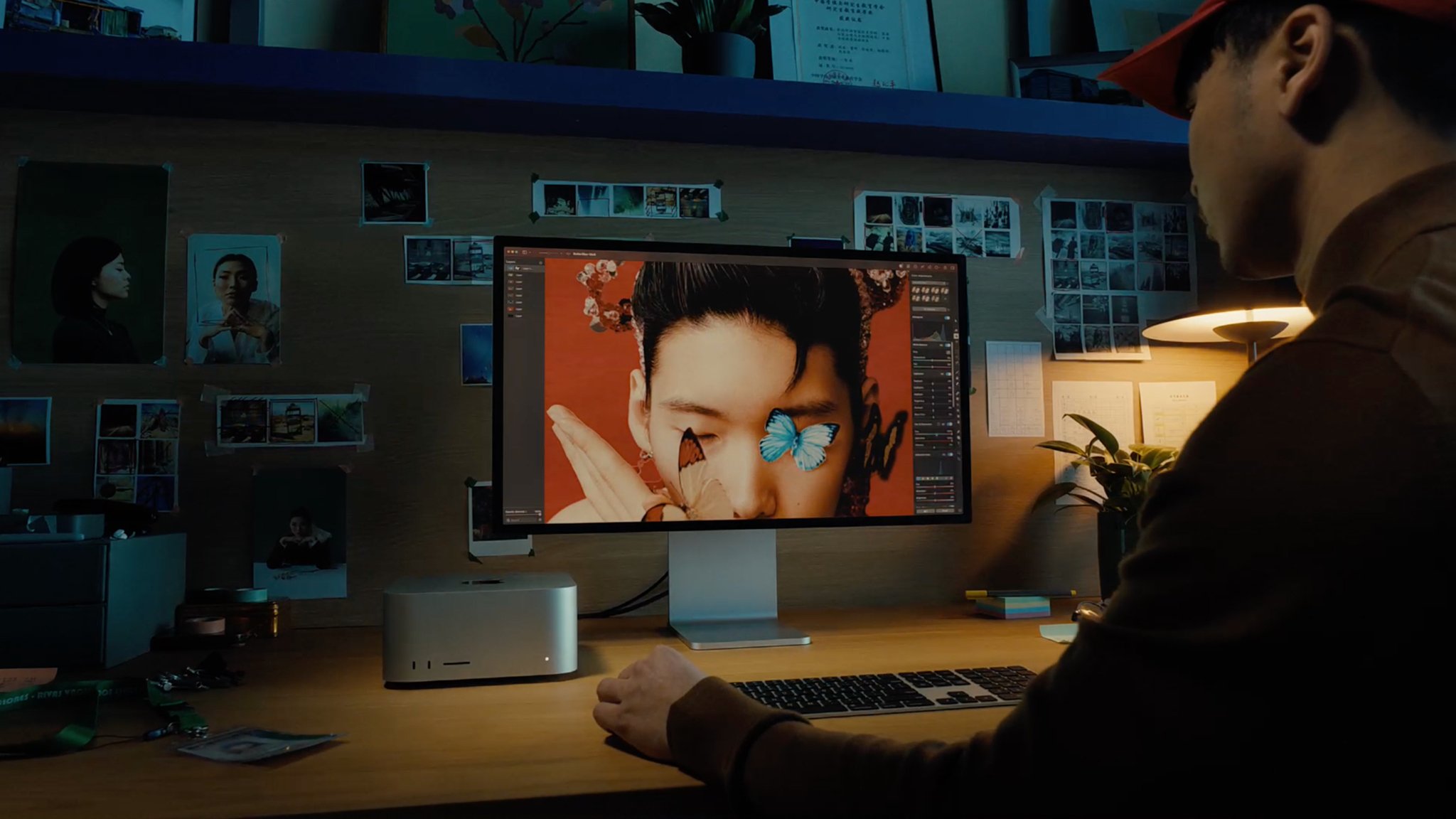iMore Verdict
Bottom line: Important drawbacks give this display a rating much lower than perhaps we expected. However, there are plenty of reasons to consider sitting this display next to your new Mac Studio or other Mac.
Pros
- +
Easy installation
- +
Wonderful design
- +
Real, beneficial speakers
- +
Center Stage
Cons
- -
Supply issues
- -
No HDR support
- -
Expensive and more so with extras
- -
Will you need a dongle?
You can always trust iMore.
Apple doesn't often introduce new monitors, let alone entirely new products. The Mac Studio Display arrived earlier this year as a companion to the new and well-received Mac Studio. However, it also works well with other Macs with macOS Monterey 12.3 or later. The 27-inch 5K display has a lot going for it, from its beautiful design to surprisingly strong speakers. Unfortunately, it comes with glaring omissions that will turn off some would-be buyers. Which camp is yours? It's time to find out in this Apple Studio Display review.
Apple Studio Display: Price and availability

The entry-level Apple Studio Display comes with standard glass, a tilt-adjustable stand, or a VESA mount adapter for $1,599. Adding Nano-textured glass increases the price to $1,999, and a tilt- and height-adjustable stand adds (another) $300 to the price. The most expensive model (Nano-textured glass and a tilt- and height-adjustable stand) is $2,299. Apple, Best Buy, and other retailers are selling the Apple Studio Display. Unfortunately, continued worldwide supply issues have caused significant shipping delays, which should improve over time.
Apple Studio Display: What's good
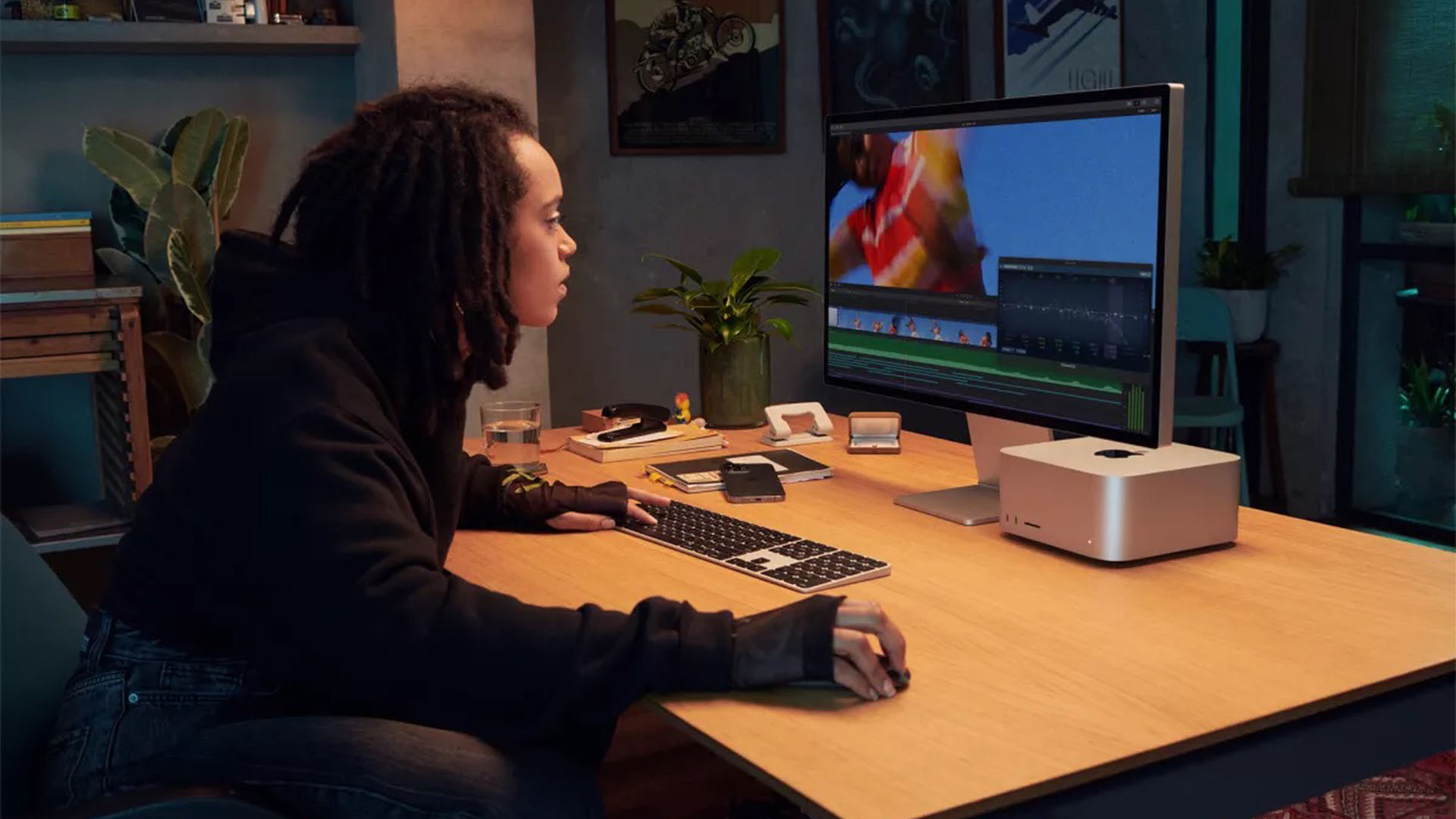
Announced and released at the same time as the Mac Studio, Apple's new 27-inch display offers 5K with 5,120-by-2,880-pixels (218 PPI), plus a few goodies you might not have expected — all in a modern-looking design made of aluminum that one has come to expect from Apple. The unexpected extras include a 12MP Ultra-Wide camera with Center Stage, a three-mic array, and a six-speaker sound system with Spatial Audio.
The display looks gorgeous with terrific color accuracy, color gamut coverage, excellent contrast, and a respectable 600 nits brightness. In addition, the Apple Studio Display offers nine reference modes, nearly matching the 11 found on the far more expensive Apple Pro Display XDR. These modes provide calibration and fine-tuning options, which creatives will find helpful. True Tone technology is also excellent, although some will choose to remove this to get exact colors.
The display looks gorgeous with terrific color accuracy, color gamut coverage, excellent contrast, and respectable 600 nits brightness.
When Apple launched the display, early buyers saw significant issues with the product's webcam and Center Stage. The company eventually released a firmware fix to resolve image quality issues. After countless tests on my review unit, I'm happy to say Center Stage works as expected and offers a pleasant experience that was once only available on higher-end iPads. The three-mic array is also impressive, making FaceTime calls even better, even in noisy conditions.
The built-in cinema speakers also score highly — for display speakers. They provide rich sounds and work well in a pinch, but they won't replace your wireless headphones.
What about setup? All you need to do is plug your Apple Studio Display into your computer with the included Thunderbolt cable, and you're good to go. Software updates for the display happen automatically via macOS updates.
iMore offers spot-on advice and guidance from our team of experts, with decades of Apple device experience to lean on. Learn more with iMore!
Apple Studio Display: What's not good
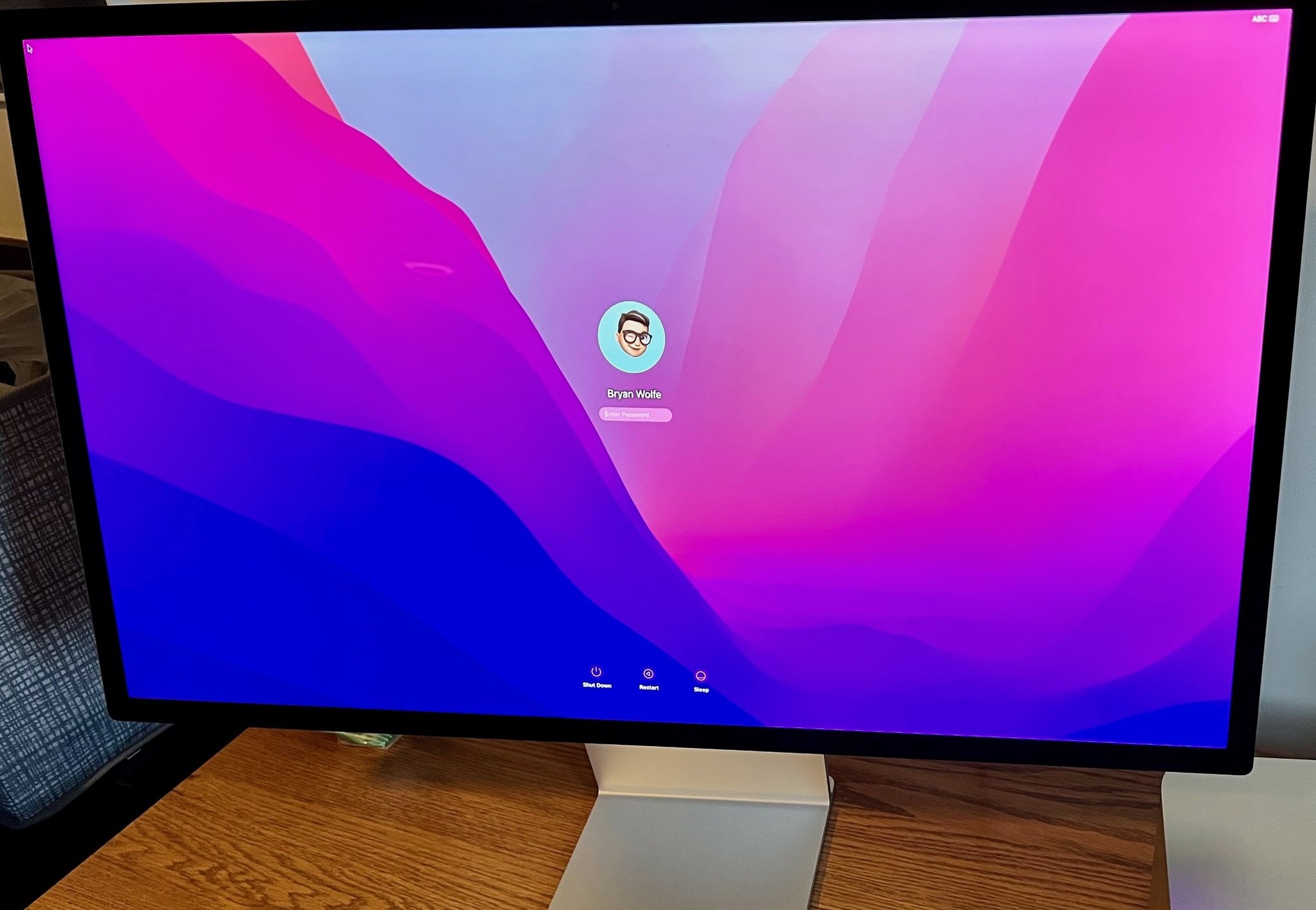
The Apple Studio Display comes with a few misses starting with its limited number of ports. It only has one Thunderbolt 3 (USB-C) port and three USB-C ports. Although this may be fine for some folks, others will find this limitation annoying, and it might mean adding a dongle or two to your setup. In another interesting move, the power cable on the Apple Studio Display isn't detachable, unlike the one found on the Apple Pro Display XDR. During regular usage, having an attached cable isn't a problem. However, it makes moving the nearly 14-pound display a little bit more cumbersome.
This brings us to two features the Apple Studio Display doesn't have but should: HDR and ProMotion. The former is a real headscratcher since HDR is found on iPhones, iPads, and Mac laptops. Also, the display doesn't include local dimming without HDR, which is a shame. On the latter, you're stuck with an underperforming 60Hz refresh rate, which is below the standard set by other Apple devices, including the iPhone 13 Pro series and 14-/16-inch MacBook Pro. These offer ProMotion technology for adaptive refresh rates up to 120Hz.
Additionally, although the display speakers are much better compared to those on others, it's worth noting Spatial Audio isn't always a wonderful experience here. But, again, it's why Apple (and many others) produce headphones.
What Apple's charging for the tilt- and height-adjustable stand seems excessive and like a money grab on Apple's part.
Despite the software update, the camera doesn't offer the superior image quality one would expect from a $1,600 display. So perhaps Apple's long-term solution is to convince users to take advance of the Continuity Camera that arrives later this year with macOS 13 Ventura for all the best Macs.
Finally, let's discuss the Apple Studio Display's price. My beef with the pricing is centered on what Apple's charging for the tilt- and height-adjustable stand: $400. This seems excessive and like a money grab on Apple's part. Unfortunately, it's not very surprising. The company has had a history of overcharging for extras across its product line. For years, many have complained about what Apple charges for adding wheels to the already very expensive Mac Pro. On the mobile front, iPhone owners have long voiced their displeasure with what Apple has charged for more storage, and the list continues on.
Regarding the Apple Studio Display, at least the upcharges aren't nearly as much as the ones for the XDR display. The Nano-glass is $1,000 extra versus $300 on the Apple Studio Display; a "Pro" stand also adds $1,000 in addition to the price.
Apple Studio Display: Competition

It might seem obvious that Apple Studio Display's biggest competitor is the already mentioned Apple Pro Display XDR. That wouldn't be correct, however. These are vastly different displays, with the latter being bigger and more feature-rich than the newer model at a price point that's not comparable.
Instead, I'd point you to an actual Apple Studio Display competitor: the LG 27 Inch UltraFine 5K IPS Monitor. The LG monitor is ideally suited for photo and video editing. Better still, LG designed it with the best MacBook in mind, as it features Thunderbolt 3 connectivity. Even better: it's $300 less than the entry-level Apple Studio Display. However, it doesn't have a gigantic Apple logo on its backside, which could be enough for buyers to choose Apple's display over this one.
Apple Studio Display: Should you buy it?
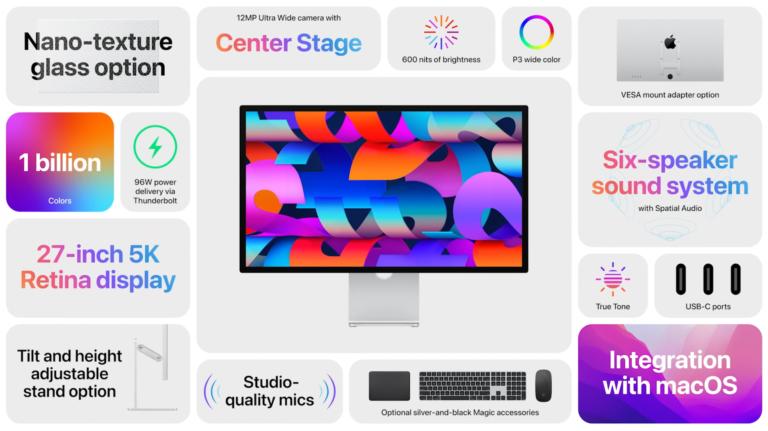
You should buy this if ...
- Staying in the Apple ecosystem is important
- You want Center Stage
- Can't afford the XDR but want something somewhat similar
You shouldn't buy this if...
- You're a budget shopper
- Need a bigger display than 27-inches
- Need a height-adjustable monitor and don't want to pay extra for it.
There are plenty of pros and cons to buying the Apple Studio Display. Everyday users probably won't care a lot about the key omissions as much as professionals. But, unfortunately, many daily users will care about the price, so go figure.
There's more right than wrong with the Apple Studio Display, a monitor that will wow the masses with its excellent design and fairly impressive display. Creatives might want to look elsewhere, however, as the likely necessary extras will cost even more than the already steep introductory price.
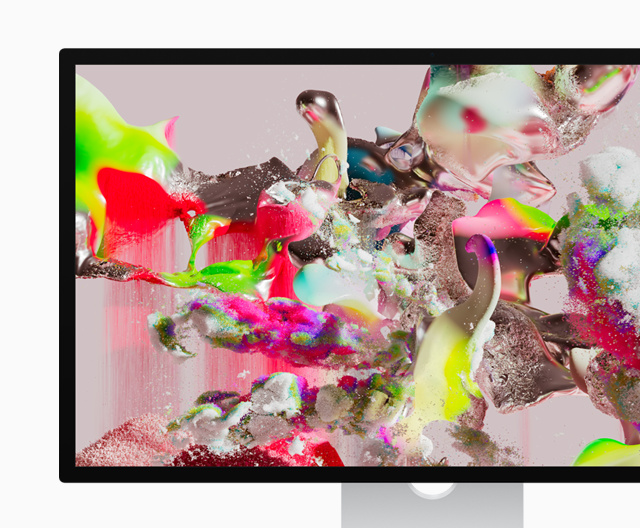
Bottom line: Apple doesn't introduce new monitors often. Many heads get turned, especially by the most loyal Apple fans, when it does. The Apple Studio Display isn't a great product but a very good one. If you can look past its limits and really want a 27-inch 5K display, it's worth considering — if you can find one on the market to get in a reasonable time frame.

Bryan M. Wolfe has written about technology for over a decade on various websites, including TechRadar, AppAdvice, and many more. Before this, he worked in the technology field across different industries, including healthcare and education. He’s currently iMore’s lead on all things Mac and macOS, although he also loves covering iPhone, iPad, and Apple Watch. Bryan enjoys watching his favorite sports teams, traveling, and driving around his teenage daughter to her latest stage show, audition, or school event in his spare time. He also keeps busy walking his black and white cocker spaniel, Izzy, and trying new coffees and liquid grapes.
